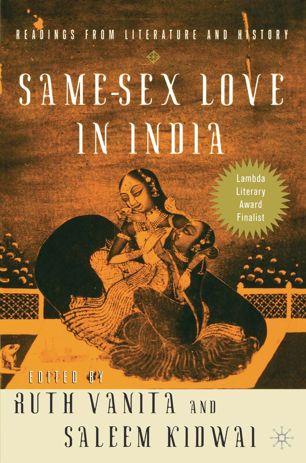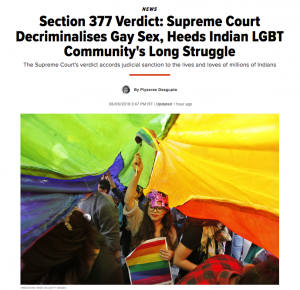A History of Sexuality
Traditionally, sexuality and variations in bodily form were celebrated in India. According to Rekhti poetry scholars, female-female erotic relationships were celebrated in poetry. In the 20th century, however, these forms of expression were “labeled obscene and systematically eliminated from the Urdu canon.”
Rekhti Poetry: Love Between Women (Urdu)
Sexuality in India Today
Today, the acceptance of variations in sexuality and bodily form are in a state of flux. In other words, the variations that were once celebrated pre-British colonization are often met with oppression and violence from family and state. Section 377, a British import, was put into law and practice in 1861. This section of the penal code was used to criminalize sexual activities “against the order of nature,” and was utilized to punish and oppression same-sex love up until September 6, 2018 (select picture below to read complete story).
Interestingly, same sex love was criminalized post-colonization while the history of Indian worship allowed for love and sex between all individuals. Indeed, the Kama Sutra has proscribed healthy sexuality through the depiction of sex acts between all genders and body types.

